- Home
- Graham Hancock
Fingerprints of the Gods Page 29
Fingerprints of the Gods Read online
Page 29
also, at least two different kinds of disaster may be portrayed as having
occurred simultaneously (most frequently floods and earthquakes, but
sometimes fire and a terrifying darkness).
All this contributes to the creation of a confused and jumbled picture.
The myths of the Hopi, however, stand out for their straightforwardness
and simplicity. What they tell us is this:
The first world was destroyed, as a punishment for human misdemeanours, by an
all-consuming fire that came from above and below. The second world ended
when the terrestrial globe toppled from its axis and everything was covered with
46 2 Peter 3:3-10.
47 See H. Murray, J. Crawford et al., An Historical and Descriptive Account of China, 2nd
edition, 1836, volume I, p. 40. See also G. Schlegel, Uranographie chinoise, 1875, p.
740.
48 Warren, Buddhism in Translations, p. 322.
49 Ibid.
50 Dixon, Oceanic Mythology, p. 178.
51 Worlds in Collision, p. 35.
52 Encyclopaedia Britannica, 6:53.
195
Graham Hancock – FINGERPRINTS OF THE GODS
ice. The third world ended in a universal flood. The present world is the fourth. Its
fate will depend on whether or not its inhabitants behave in accordance with the
Creator’s plans.53
We are on the trail of a mystery here. And while we may never hope to
fathom the plans of the Creator we should be able to reach a judgement
concerning the riddle of our converging myths of global destruction.
Through these myths the voices of the ancients speak to us directly.
What are they trying to say?
53 World Mythology, p. 26. Details of the Hopi world destruction myths are in Frank
Waters, The Book of the Hopi, Penguin, London, 1977.
196
Graham Hancock – FINGERPRINTS OF THE GODS
Chapter 25
The Many Masks of the Apocalypse
Like the Hopi Indians of North America, the Avestic Aryans of pre-Islamic
Iran believed that there were three epochs of creation prior to our own. In
the first epoch men were pure and sinless, tall and long lived, but at its
close the Evil One declared war against Ahura Mazda, the holy god, and a
tumultuous cataclysm ensued. During the second epoch the Evil One was
unsuccessful. In the third good and evil were exactly balanced. In the
fourth epoch (the present age of the world), evil triumphed at the outset
and has maintained its supremacy ever since.1
The end of the fourth epoch is predicted soon, but it is the cataclysm at
the end of the first epoch that interests us here. It is not a flood, and yet
it converges in so many ways with so many global flood traditions that
some connection is strongly suggested.
The Avestic scriptures take us back to a time of paradise on earth, when
the remote ancestors of the ancient Iranian people lived in the fabled
Airyana Vaejo, the first good and happy creation of Ahura Mazda that
flourished in the first age of the world: the mythical birthplace and
original home of the Aryan race.
In those days Airyana Vaejo enjoyed a mild and productive climate with
seven months of summer and five of winter. Rich in wildlife and in crops,
its meadows flowing with streams, this garden of delights was converted
into an uninhabitable wasteland of ten months’ winter and only two
months summer as a result of the onslaught of Angra Mainyu, the Evil
One:
The first of the good lands and countries which I, Ahura Mazda, created was the
Airyana Vaejo ... Then Angra Mainyu, who is full of death, created an opposition to
the same, a mighty serpent and snow. Ten months of winter are there now, two
months of summer, and these are cold as to the water, cold as to the earth, cold
as to the trees ... There all around falls deep snow; that is the direst of plagues ...’2
The reader will agree that a sudden and drastic change in the climate of
Airyana Vaejo is indicated. The Avestic scriptures leave us in no doubt
about this. Earlier they describe a meeting of the celestial gods called by
Ahura Mazda, and tell us that ‘the fair Yima, the good shepherd of high
renown in the Airyana Vaejo’, attended this meeting with all his excellent
mortals.
1 The Bundahish Chapters I, XXXI, XXXIV, cited in William F. Warren, Paradise Found: The
Cradle of the Human Race at the North Pole, Houghton, Mifflin and Co., Boston, 1885, p.
282.
2 Vendidad, Fargard I, cited in Lokamanya Bal Gangadhar Tilak, The Arctic Home in the
Vedas, Tilak Publishers, Poona, 1956, pp. 340-1.
197
Graham Hancock – FINGERPRINTS OF THE GODS
It is at this point that the strange parallels with the traditions of the
biblical flood begin to crop up, for Ahura Mazda takes advantage of the
meeting to warn Yima of what is about to happen as a result of the
powers of the Evil One:
And Ahura Mazda spake unto Yima saying: ‘Yima the fair ... Upon the material
world a fatal winter is about to descend, that shall bring a vehement, destroying
frost. Upon the corporeal world will the evil of winter come, wherefore snow will
fall in great abundance. ...
‘And all three sorts of beasts shall perish, those that live in the wilderness, and
those that live on the tops of the mountains, and those that live in the depths of
the valleys under the shelter of stables.
‘Therefore make thee a var [a hypogeum or underground enclosure] the length of
a riding ground to all four corners. Thither bring thou the representatives of every
kind of beast, great and small, of the cattle, of the beasts of burden, and of men,
of dogs, of birds, and of the red burning fires.3
‘There shalt thou make water flow. Thou shall put birds in the trees along the
water’s edge, in verdure which is everlasting. There put specimens of all plants,
the loveliest and most fragrant, and of all fruits the most succulent. All these
kinds of things and creatures shall not perish as long as they are in the var. But
put there no deformed creature, nor impotent, nor mad, neither wicked, nor
deceitful, nor rancorous, nor jealous; nor a man with irregular teeth, nor a leper
...’4
Apart from the scale of the enterprise there is only one real difference
between Yima’s divinely inspired var and Noah’s divinely inspired ark: the
ark is a means of surviving a terrible and devastating flood which will
destroy every living creature by drowning the world in water; the var is a
means of surviving a terrible and devastating ‘winter’ which will destroy
every living creature by covering the earth with a freezing blanket of ice
and snow.
In the Bundahish, another of the Zoroastrian scriptures (believed to
incorporate ancient material from a lost part of the original Avesta), more
information is provided on the cataclysm of glaciation that overwhelmed
Airyana Vaejo. When Angra Mainyu sent the ‘vehement destroying frost’,
he also ‘assaulted and deranged the sky’.5 The Bundahish tells us that
this assault enabled the Evil One to master ‘one third of the sky and
overspread it with darkness’ as the encroaching ice sheets tightened their
>
grip.6
3 Vendidad, Fargard II, cited in The Arctic Home in the Vedas, pp. 300, 353-4.
4 New Larousse Encyclopaedia of Mythology, p. 320.
5 West, Pahlavi Texts Part I, p. 17, London, 1880.
6 Ibid.; Justi, Der Bundahish, Leipzig, 1868, p. 5.
198
Graham Hancock – FINGERPRINTS OF THE GODS
Indescribable cold, fire, earthquakes and derangement of
the skies
The Avestic Aryans of Iran, who are known to have migrated to western
Asia from some other, distant homeland,7 are not the only possessors of
archaic traditions which echo the basic setting of the great flood in ways
unlikely to be coincidental. Indeed, though these are most commonly
associated with the deluge, the familiar themes of the divine warning,
and of the salvation of a remnant of mankind from a universal disaster,
are also found in many different parts of the world in connection with the
sudden onset of glacial conditions.
In South America, for example, Toba Indians of the Gran Chaco region
that sprawls across the modern borders of Paraguay, Argentina and Chile,
still repeat an ancient myth concerning the advent of what they call ‘the
Great Cold’. Forewarning comes from a semi-divine hero figure named
Asin:
Asin told a man to gather as much wood as he could and to cover his hut with a
thick layer of thatch, because a time of great cold was coming. As soon as the hut
had been prepared Asin and the man shut themselves inside and waited. When the
great cold set in, shivering people arrived to beg a firebrand from them. Asin was
hard and gave embers only to those who had been his friends. The people were
freezing, and they cried the whole night. At midnight they were all dead, young
and old, men and women ... this period of ice and sleet lasted for a long time and
all the fires were put out. Frost was as thick as leather.8
As in the Avestic traditions it seems that the great cold was accompanied
by great darkness. In the words of one Toba elder, these afflictions were
sent ‘because when the earth is full of people it has to change. The
population has to be thinned out to save the world ... In the case of the
long darkness the sun simply disappeared and the people starved. As
they ran out of food, they began eating their children. Eventually they all
died ...9
The Mayan Popol Vuh associates the flood, with ‘much hail, black rain
and mist, and indescribable cold’.10 It also says that this was a period
when ‘it was cloudy and twilight all over the world ... the faces of the sun
and the moon were covered.’11 Other Maya sources confirm that these
strange and terrible phenomena were experienced by mankind, ‘in the
time of the ancients. The earth darkened ... It happened that the sun was
still bright and clear. Then, at midday, it got dark ...12 Sunlight did not
return till the twenty-sixth year after the flood.’13
7 The Arctic Home in the Vedas, p. 390ff.
8 The Mythology of South America, pp. 143-4
9 Ibid., p. 144.
10 Popol Vuh, p. 178.
11 Ibid., p. 93.
12 The Mythology of Mexico and Central America, p. 41.
13 Maya History and Religion, p. 333.
199
Graham Hancock – FINGERPRINTS OF THE GODS
The reader may recall that many deluge and catastrophe myths contain
references not only to the onset of a great darkness but to other changes
in the appearance of the heavens. In Tierra del Fuego, for instance, it was
said that the sun and the moon ‘fell from the sky’14 and in China that ‘the
planets altered their courses. The sun, moon and stars changed their
motions.’15 The Incas believed that ‘in ancient times the Andes were split
apart when the sky made war on the earth.’16 The Tarahumara of northern
Mexico have preserved world destruction legends based on a change in
the sun’s path.17 An African myth from the lower Congo states that ‘long
ago the sun met the moon and threw mud at it, which made it less bright.
When this meeting happened there was a great flood ...’18 The Cahto
Indians of California say simply that ‘the sky fell’.19 And ancient GraecoRoman myths tell that the flood of Deucalion was immediately preceded
by awesome celestial events.20 These events are graphically symbolized in
the story of how Phaeton, child of the sun, harnessed his father’s chariot
but was unable to guide it along his father’s course:
Soon the fiery horses felt how their reins were in an unpractised hand. Rearing and
swerving aside, they left their wonted way; then all the earth was amazed to see
that the glorious Sun, instead of holding his stately, beneficent course across the
sky, seemed to speed crookedly overhead and to rush down in wrath like a
meteor.’21
This is not the place to speculate on what may have caused the alarming
disturbances in the patterns of the heavens that are linked with cataclysm
legends from all over the world. For our purposes at present, it is
sufficient to note that such traditions seem to refer to the same
‘derangement of the sky’ that accompanied the fatal winter and
spreading ice sheets described in the Iranian Avesta.22 Other linkages
occur. Fire, for example, often follows or precedes the flood. In the case
of Phaeton’s adventure with the Sun, ‘the grass withered; the crops were
scorched; the woods went up in fire and smoke; then beneath them the
bare earth cracked and crumbled and the blackened rocks burst asunder
under the heat.’23
Volcanism and earthquakes are also mentioned frequently in
association with the flood, particularly in the Americas. The Araucanians
14 See Chapter Twenty-four.
15 Ibid.
16 National Geographic Magazine, June 1962, p. 87.
17 The Mythology of Mexico and Central America, p. 79.
18 New Larousse Encyclopaedia of Mythology, p. 481.
19 The Mythology of all Races, Cooper Square Publishers Inc., New York, 1964, volume X,
p. 222.
20 See particularly the writings of Hyginus, cited in Paradise Found, p. 195. See also The
Gods of the Greeks, p. 195.
21 The Illustrated Guide to Classical Mythology, p. 15-17.
22 The Iranian Bundahish tells us that the planets ran against the sky and created
confusion in the entire cosmos.
23 The Illustrated Guide to Classical Mythology, p. 17.
200
Graham Hancock – FINGERPRINTS OF THE GODS
of Chile say quite explicitly that ‘the flood was the result of volcanic
eruptions accompanied by violent earthquakes.’24 The Mam Maya of
Santiago Chimaltenango in the western highlands of Guatemala retain
memories of ‘a flood of burning pitch’ which, they say, was one of the
instruments of world destruction.25 And in the Gran Chaco of Argentina,
the Mataco Indians tell of ‘a black cloud that came from the south at the
time of the flood and covered the whole sky. Lightning struck and
thunder was heard. Yet the drops that fell were not like rain. They were
like fire ...’26
A monster chased the sun
There is one ancient culture that perhaps preserves more vivid memories
in its myths than any other; that of the so-called Teutonic tribes of
Germany and Scandinavia, a culture best remembered through the songs
of the Norse scalds and sages. The stories those songs retell have their
roots in a past which may be much older than scholars imagine and
which combine familiar images with strange symbolic devices and
allegorical language to recall a cataclysm of awesome magnitude:
In a distant forest in the east an aged giantess brought into the world a whole
brood of young wolves whose father was Fenrir. One of these monsters chased the
sun to take possession of it. The chase was for long in vain, but each season the
wolf grew in strength, and at last he reached the sun. Its bright rays were one by
one extinguished. It took on a blood red hue, then entirely disappeared.
Thereafter the world was enveloped in hideous winter. Snow-storms descended
from all points of the horizon. War broke out all over the earth. Brother slew
brother, children no longer respected the ties of blood. It was a time when men
were no better than wolves, eager to destroy each other. Soon the world was going
to sink into the abyss of nothingness.
Meanwhile the wolf Fenrir, whom the gods had long ago so carefully chained up,
broke his bonds at last and escaped. He shook himself and the world trembled.
The ash tree Yggdrasil [envisaged as the axis of the earth] was shaken from its
roots to its topmost branches. Mountains crumbled or split from top to bottom,
and the dwarfs who had their subterranean dwellings in them sought desperately
and in vain for entrances so long familiar but now disappeared.
Abandoned by the gods, men were driven from their hearths and the human race
was swept from the surface of the earth. The earth itself was beginning to lose its
shape. Already the stars were coming adrift from the sky and falling into the
gaping void. They were like swallows, weary from too long a voyage, who drop
and sink into the waves.
The giant Surt set the entire earth on fire; the universe was no longer more than
24 Folklore in the Old Testament, p. 101.
25 Maya History and Religion, p. 336.
26 The Mythology of South America, pp. 140-2.
201
Graham Hancock – FINGERPRINTS OF THE GODS
an immense furnace. Flames spurted from fissures in the rocks; everywhere there

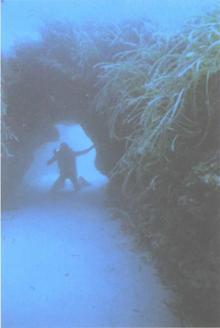 Underworld: The Mysterious Origins of Civilization
Underworld: The Mysterious Origins of Civilization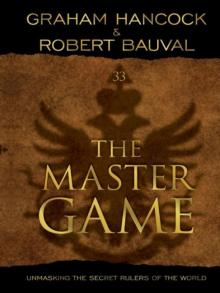 The Master Game: Unmasking the Secret Rulers of the World
The Master Game: Unmasking the Secret Rulers of the World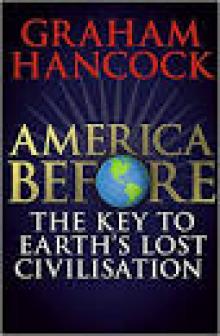 America Before
America Before Entangled
Entangled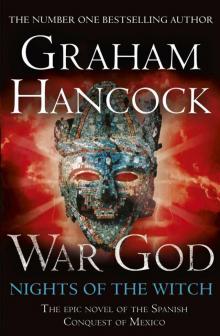 War God: Nights of the Witch
War God: Nights of the Witch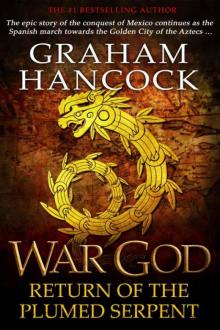 War God: Return of the Plumed Serpent
War God: Return of the Plumed Serpent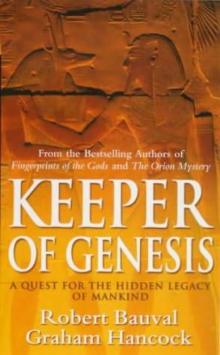 The Message of the Sphinx AKA Keeper of Genesis
The Message of the Sphinx AKA Keeper of Genesis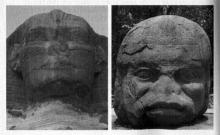 Fingerprints of the Gods
Fingerprints of the Gods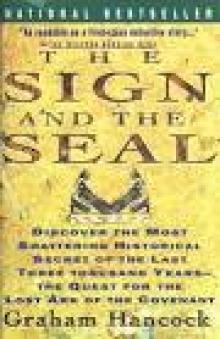 The Sign and the Seal
The Sign and the Seal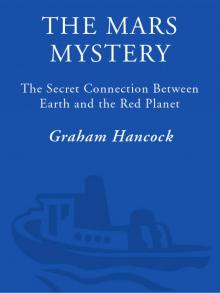 The Mars Mystery: The Secret Connection Between Earth and the Red Planet
The Mars Mystery: The Secret Connection Between Earth and the Red Planet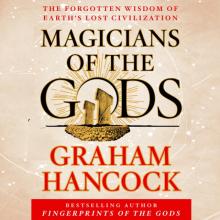 Magicians of the Gods: The Forgotten Wisdom of Earth's Lost Civilization
Magicians of the Gods: The Forgotten Wisdom of Earth's Lost Civilization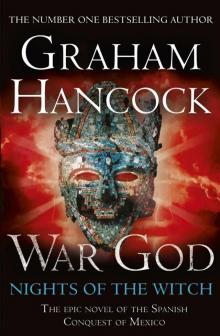 War God
War God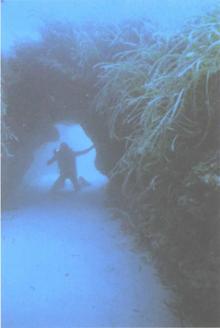 Underworld
Underworld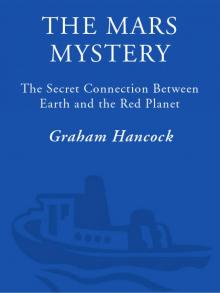 The Mars Mystery
The Mars Mystery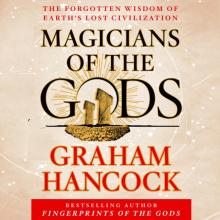 Magicians of the Gods
Magicians of the Gods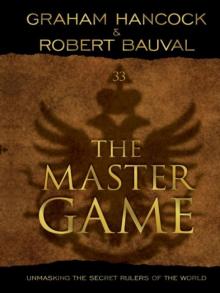 The Master Game
The Master Game